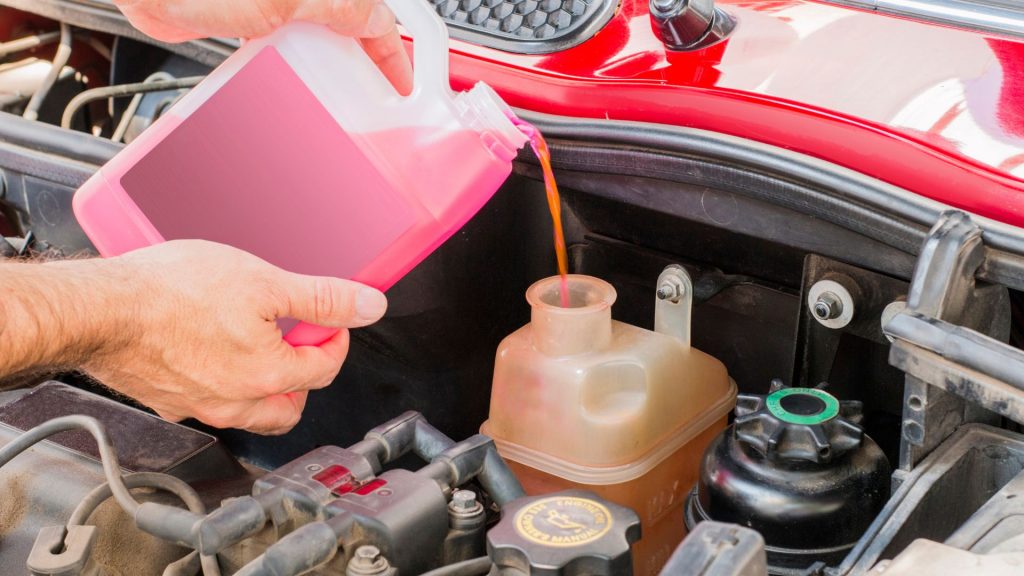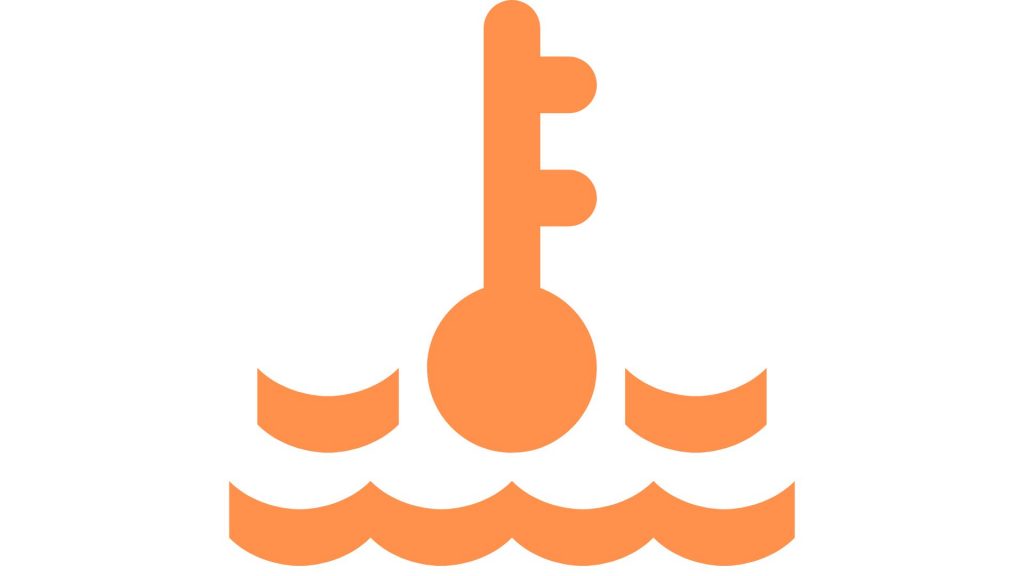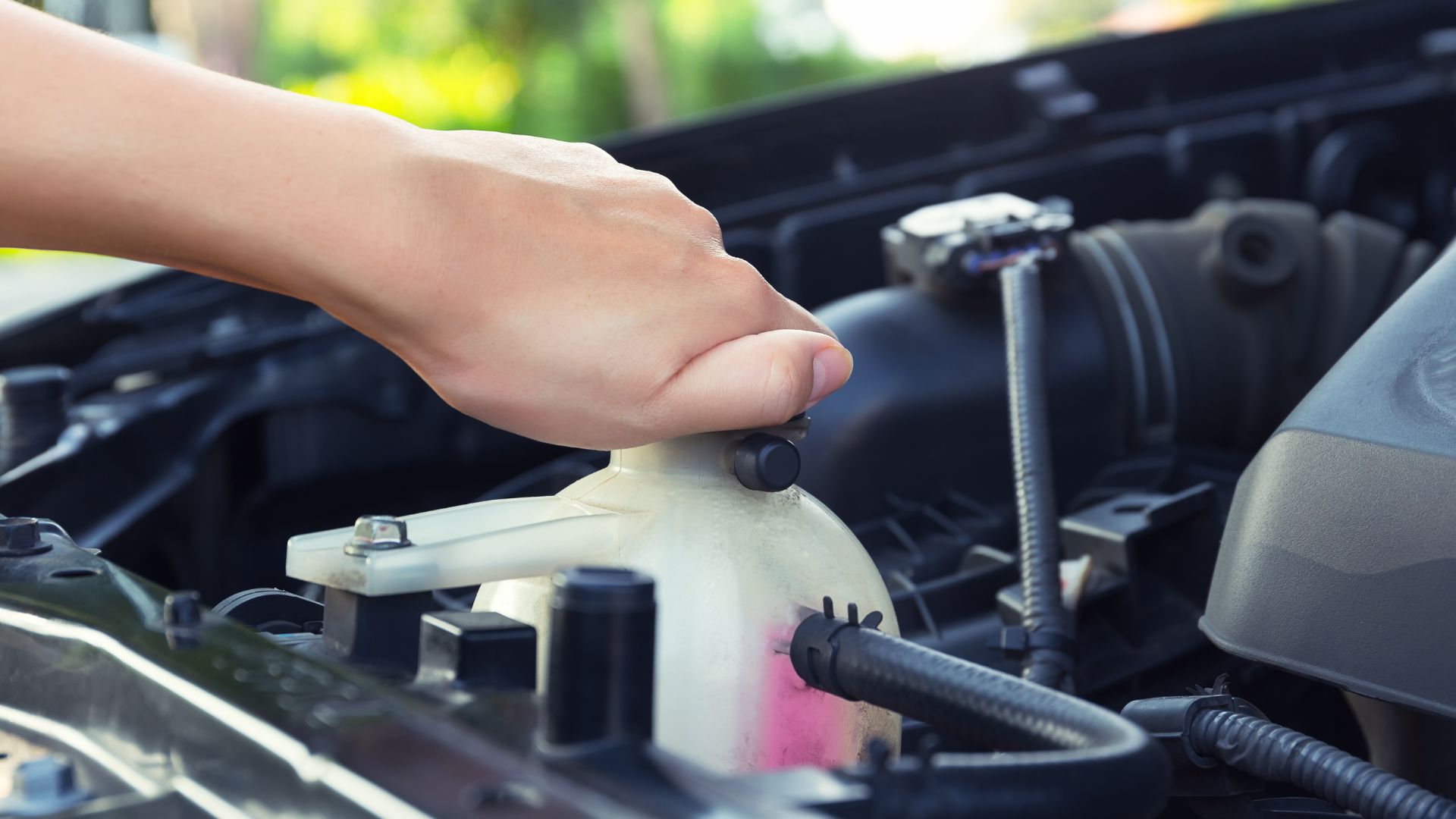While some vehicles can tolerate far less coolant without the engine overheating, others cannot. The respective height of the radiator, coolant pump, and engine will have a bearing on the issue. Generally, if It is just below the minimum mark by an inch or two, you may be fine for a while.
Can You Drive with Coolant Level Below Minimum?
It is not recommended to drive with coolant levels below minimum because low coolant levels can lead to coolant system airlocks, promoting engine overheating. So, get some coolant and top it off.
Also, you should check the engine often if it has a slow leak and you cannot fix it immediately. It is vital to keep an eye on the temperature gauge and slow down or add coolant if it begins to move into the red.
In case of a severe problem, such as a blown lower radiator line leaving no coolant at all, Stop. Do not drive the vehicle, especially if it has an alloy block or heads. In such a scenario, the risk of irreparable engine damage is extremely high. Call for a tow. If possible, wait for the car to cool down before filling it up and driving carefully.
If the gauge approaches the H end, stop and continue the cool-and-fill procedure until you reach a repair shop.
Why Do You Require a Coolant?

A coolant is an essential fluid for regulating engine temperature. It functions more like blood in the body, which maintains the body temperature. A coolant plays various roles, including:
- Bringing the engine to its optimum working temperature uniformly and effectively during cold starts.
- Maintaining the ideal working temperature under all circumstances. It takes place as the coolant circulates through the cooling jacket and transfers heat to the radiator.
- A decent antifreeze coolant can spare you a lot of labor in extremely cold climates.
- Most coolants can endure only moderately low sub-zero temperatures, although others can withstand very low sub-zero temperatures.
- The coolant pump fan also needs to be lubricated. Yet, oil or grease is less effective because the fan operates in a water-based coolant. Thus, the coolant is blended with special lubricant and anti-rust additives to ensure the fan lasts.
Should You Pull Over if the Coolant Warning Light Comes On, or is it Safe to Continue Driving?

Stop immediately and shut the engine down when the coolant overheat light comes on. The engine block will stretch or bend in a relatively short time if an engine overheats. The flexing of the engine block causes the head gasket to leak. It allows antifreeze to seep into the crankcase oil, the cylinders, and the combustion chamber.
In a warped engine block, replacing the head gasket results in a new head gasket that leaks after a brief period of effectiveness. Typically, engine replacement is necessary due to a warped engine block. Overheating can also cause engine seizures. So, you must stop the vehicle as soon as the engine overheat light illuminates.
So, stop right away, and turn off the engine. Locate the leak, then plug it in. Then, refill the coolant and find the nearest repair shop. Call a tow truck if you lack the necessary skills, equipment, or parts to fix the issue.
How Long Can You Drive with Minimum Coolant?
You can drive with minimum coolant until the engine shows signs of overheating. So, as long as there is enough coolant to circulate, the temperature gauge is not in the red, or the engine overheating light is off, you are good.
But you may have to stop and cool off the engine often. Also, avoid speeding because, without adequate coolant, the engine may develop hotspots leading to excessive detonation.
Why does My Coolant Level Keep dropping from maximum to minimum every month?
There is a leak somewhere in the coolant system or a crack in the head gasket, allowing the fluid to flow into the engine and burn off. The exhaust will have a sweet smell. If the vehicle is older and is not worth expensive repairs, it is probably cheaper to keep refilling the coolant every week or two. Never let it run dry because it can mess up the engine.
If the vehicle has some value, have an experienced mechanic sort it out. You can carry out the repairs if you have confidence in yourself and are technically savvy.
What Happens if Coolant is Below Minimum? Its Symptoms
The coolant/antifreeze is an essential vehicle fluid. It regulates the operating temperature, lubricates the water pump, combats coolant passages corrosion, and prevents freezing. So, driving with low coolant can lead to severe engine damage, such as a blown head gasket and engine warping or seizure.
Symptoms of low or decreasing coolant include:
- Coolant leak
- Engine overheating
- Vehicle Heater woes
- Expansion tank issues
- Troubles with the radiator cap
- Significant decrease in fuel economy
- A sweet smell in the cabin or the exhaust
What Should You Do After the Coolant Level is Below Minimum?
Follow the owner’s manual instructions for your vehicle concerning when to check it, i.e., hot or cold, and add fluid accordingly. If the coolant level is below the minimum mark, you can add enough distilled/deionized water.
Bring the fluid level to the F mark, but do not fill it all the way; anything between the F and L marks is acceptable. You should use distilled water because tap water contains minerals. These minerals can generate silt in your coolant system by reacting with metals in your engine and radiator.
Buying pre-mixed antifreeze/distilled water in a 50/50 ratio is a wiser move. Buy a gallon, fill up your tank, and save the remaining liquid for future use. It has no expiration date.
There are three or four various types of antifreeze that you may use; use the manufacturer-recommended coolant. It should not be a problem since they are all color-coded, i.e., green, orange, yellow, and red.
Avoid mixing coolants of different colors because the different hues have distinct chemical compositions. So, do not mix the coolants because it can lead to rapid corrosion prompting congestion, water pump damage, and sludging.
The mix can also turn acidic and corrode the head gasket. So, flush out the old coolant and refill with the recommended coolant fluid.
Regularly check the level to ensure you have the proper amount of fluid and determine if there is a leak. If there is a problem, it will suddenly be too high/overflowing or too low/bone dry. If it does this or frequent additions are necessary, there is a problem. Visit a certified dealer or repair facility for a cooling system inspection.
Are Drain and Refill the Coolant Necessary?
Yes, because the coolant has a life expectancy like any other vehicle fluid. Most coolants are acidic to raise the boiling and freezing point. Over time the water solution evaporates, increasing the coolant acidity. Also, the coolant becomes contaminated with material as it circulates in the engine causing acids to build up in the coolant.
Furthermore, the coolant becomes diluted, especially if you regularly add distilled water to the reservoir. So, most manufacturers recommend coolant draining and flushing to prevent the corrosion of engine cooling ports, cylinder liners, oil coolers, heater cores, radiators, thermostats, and plastic tank deterioration.
Most manufacturers recommend two-year coolant change intervals. Consult your vehicle owner’s manual for the recommendation.
Coolant Below Minimum When Cold – Why?
The coolant expands and contracts when heated and cooled; it is typical. Fill the reservoir or expansion tank halfway when it is cold to prevent air from entering the system. As the engine heats up and the coolant expands, it flows into the tank. When you turn off the engine, the system cools, and the radiator sucks the coolant, lowering the coolant level in the reservoir.
So, the radiator is always full, optimizing its cooling capability, and if any coolant leaks out, the reservoir compensates. If there is little coolant in the tank, the system sucks in air and can create an airlock that prevents the coolant from circulating. If you have to refill the reservoir regularly, there is a leak within the cooling system.
The standard radiator caps on many vehicles allow the coolant to leak into the reservoir when the pressure builds up. On occasion, the cap may not be well fastened, or in an older vehicle, the cap gaskets may have lost their ability to contain the pressure from the radiator. Thus, the coolant gradually decreases because it escapes in the form of steam.
If you suspect a gradual coolant leak, check the security and condition of the radiator cap. Always check the coolant level when the engine is cold; opening a pressurized cooling system with a hot coolant might cause steam and hot coolant burns.
The leak may also occur through a rubber hose, a crack in the radiator, or the engine block/head gasket. If you notice white, fragrant smoke from your exhaust, the coolant is leaking into the engine. Using a leak tester is a simple technique to check. You can also purchase dye, which can help to locate the leak.
Related Post:

